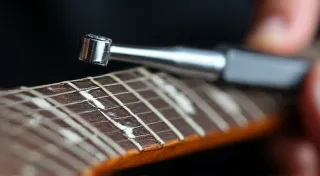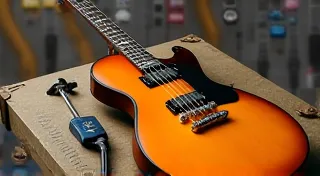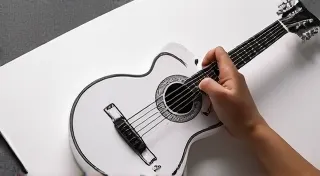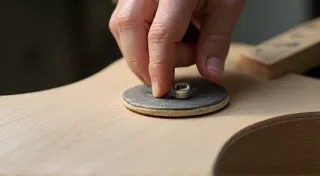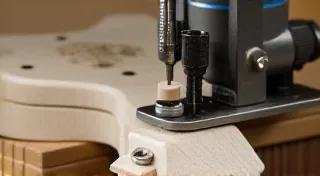Using a Router for Guitar Building: Safety and Techniques
Routing is an essential skill for any DIY guitar builder. It allows you to accurately shape the body and neck of your instrument, creating the contours, cavities, and profiles that define the guitar's feel and tone. While powerful and versatile, routers also pose significant safety risks if not used correctly. This article will cover basic routing techniques and, most importantly, crucial safety precautions. Before you even begin, it's worth ensuring you have the essential tools for the job, as a few key items can make a huge difference in your routing precision and safety.
Understanding Your Router
Before even plugging in your router, familiarize yourself with its controls and features. Learn how to adjust the depth of cut, control the speed, and use the various bits. Different bits are designed for specific tasks, from shaping edges (roundover bits) to creating pickup cavities (straight bits) to cutting intricate designs. Consult your router’s manual for detailed instructions.

Essential Safety Gear
Safety is paramount when operating a router. Never compromise on protective equipment. Here's what you absolutely need:
- Safety Glasses/Goggles: Wood chips and debris fly at high speed. Protect your eyes.
- Hearing Protection: Routers are loud! Use earplugs or earmuffs to prevent hearing damage.
- Dust Mask/Respirator: Routing generates a lot of fine wood dust, which can be harmful. Think about the impact of dust exposure long-term.
- Close-fitting Clothing: Avoid loose clothing that could get caught in the router.
- Sturdy Footwear: Provide a stable base and protect your feet.
Basic Routing Techniques
Let's cover a few fundamental routing techniques common in guitar building:
- Edge Rounding: Use a roundover bit to soften sharp edges on the guitar body and headstock. Use a fence or edge guide for consistent results. This is particularly important when ensuring a comfortable feel for the player.
- Pickup Cavities: Use a straight bit and a template to accurately route out the spaces for pickups. Precise routing is vital for proper pickup placement and string clearance.
- Control Cavities: Similar to pickup cavities, control cavities require precise routing. Templates are highly recommended.
- Neck Pocket Routing: The neck pocket is a critical element. Use a template and carefully control the depth to ensure a proper neck angle and comfortable action. Achieving the correct scale length is essential for the neck pocket routing too, and you may find building a simple scale length calculator very useful for accuracy.
Tips for Clean Routing
- Use Templates: Templates are your best friend. They ensure accuracy and repeatability. Consider creating your own templates to customize your designs.
- Multiple Passes: Don't try to remove too much material in a single pass. Multiple shallower passes are safer and produce cleaner results. This is a core principle of safe and efficient routing.
- Feed Rate: Maintain a consistent feed rate – too fast and you're likely to tear the wood; too slow and you're risking burning. Experiment to find the optimal feed rate for different wood types.
- Clamping: Securely clamp your workpiece to prevent movement during routing. A stable workpiece is crucial for accurate routing.
- Check Depth Frequently: Use a depth gauge or ruler to ensure you're routing to the correct depth. Regularly checking depth prevents costly mistakes.
Safety First: Avoiding Accidents
Here's a reminder of essential safety practices:
- Read the Manual: Seriously, read your router's manual. Understanding your router's specific safety features is vital.
- Inspect Router and Bits: Check for damage before each use. A damaged bit or router can be extremely dangerous.
- Clear the Area: Keep the work area free of clutter and distractions. A clear workspace minimizes the risk of accidents.
- Never Force the Router: Let the router do the work. Forcing the router can lead to kickback and other hazards.
- Disconnect Power: Always disconnect the router from the power source when changing bits or making adjustments. This prevents accidental activation.
- Be Aware of Kickback: Kickback is a dangerous phenomenon where the router is violently thrown back towards the operator. Proper technique, sharp bits, and secure workpieces can minimize the risk. Understanding how to address kickback is a crucial skill for any router operator.
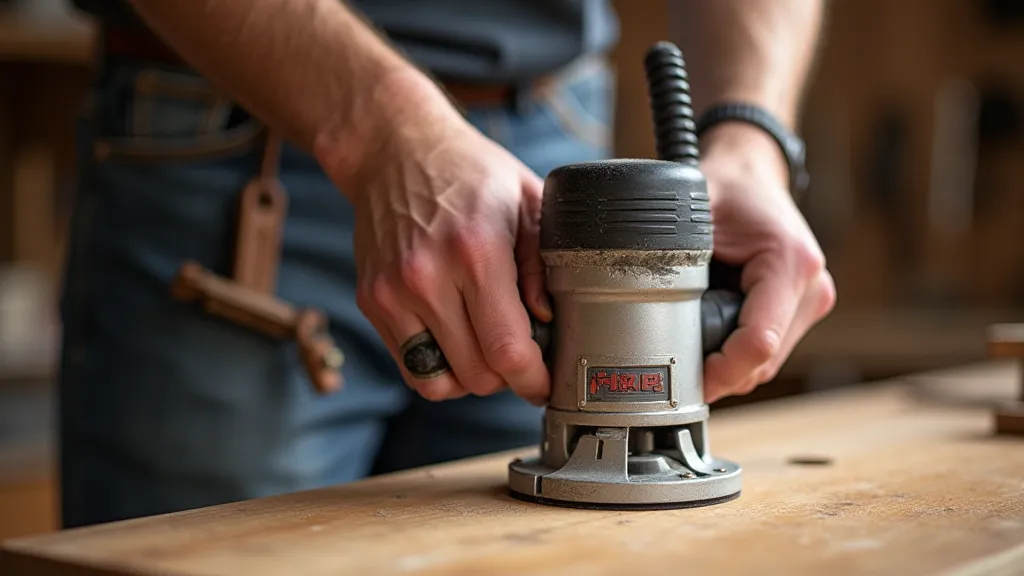
Delving Deeper: Wood Selection and Router Bit Choice
The wood you choose and the router bits you use will significantly impact the outcome and safety of your routing operations. Softer woods like basswood and poplar are generally easier to route, requiring less force and producing cleaner cuts. However, hardwoods like maple and mahogany demand more power and sharper bits. A dull bit will increase the risk of tear-out and kickback. When working with hardwoods, consider using a spiral upcut bit to help pull the router through the wood and reduce the chance of kickback. Different bit profiles create different edge finishes – a roundover bit creates a rounded edge, while a chamfer bit creates a beveled edge. Experimentation is key to achieving the desired aesthetic and functionality.
Advanced Routing Techniques and Customization
As you gain experience, you can explore more advanced routing techniques, such as using different bit profiles and creating custom templates. Consider experimenting with patterns to create unique designs on your guitar bodies. Creating your own templates allows for complete design control. Think about incorporating inlay work, where contrasting materials are routed into the guitar body to create decorative patterns. This requires a high level of precision and control. Creating custom templates requires some drafting or CAD skills.
Maintaining Your Router and Router Bits
Proper maintenance is critical for both the longevity of your router and the safety of your work. Regularly clean your router’s vents to prevent overheating. Lubricate moving parts as recommended by the manufacturer. Router bits become dull over time and should be sharpened or replaced. A sharp bit cuts cleaner, requires less force, and reduces the risk of kickback. Keeping your router bits organized and labeled helps ensure you’re using the correct bit for each task. There are many resources online demonstrating how to sharpen router bits, but professional sharpening services are also available.
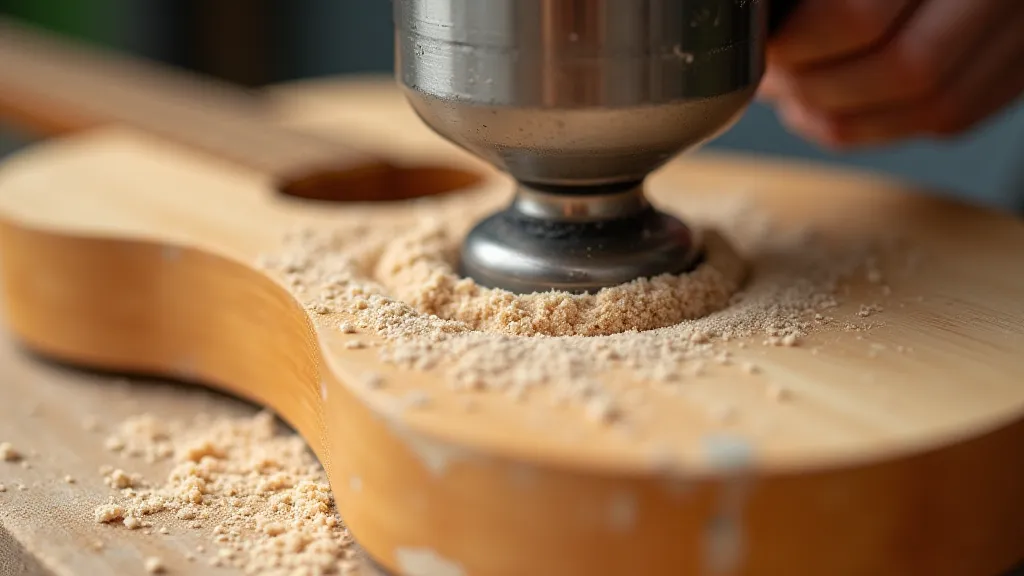
Beyond the Basics
As you gain experience, you can explore more advanced routing techniques, such as using different bit profiles and creating custom templates. However, never compromise on safety. Continued learning and vigilance are key to becoming a skilled and safe router operator. Remember that achieving consistent results requires practice and attention to detail. Before you move on to more complex routing projects, make sure you've mastered the fundamentals. Setting up your guitar correctly after routing, including adjusting the action and intonation, is a crucial step in the process. You might find that setting up your guitar requires a few adjustments after some extensive routing work!
